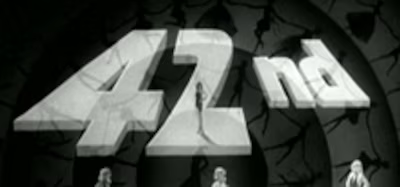42nd Street

Brief Synopsis
Cast & Crew
Lloyd Bacon
Warner Baxter
Bebe Daniels
George Brent
Ruby Keeler
Guy Kibbee
Film Details
Technical Specs

Synopsis
Julian Marsh, a tough, demanding Broadway director, ignores his weak heart when he has a chance to earn money he needs desperately by directing Pretty Lady the next musical for producers Jones & Barry. The leading lady, Dorothy Brock, has been cast already by backer Abner Dillon, who is also Dorothy's sugar daddy. In a highly competitive casting call, Marsh and his stage manager, Andy Lee, audition the dancers, choosing among them Lee's girlfriend Loraine Fleming, a gold digger nick-named Anytime Annie, and newcomer Peggy Sawyer. Billy Lawler, the play's juvenile, falls in love with Peggy, but she is more impressed with Pat Denning, Dorothy's lover and ex-partner. Pat is getting tired of living in the shadow of Dorothy's life and soon leaves for Philadelphia to establish his independence. Coincidentally, the company goes to Philadelphia for its out-of-town opening. During the cast party the night before the opening, Dorothy gets drunk, fights with Pat, and in the struggle, badly sprains her ankle. The next evening, after exhausting rehearsals with Marsh, Peggy goes on in her place and is a star overnight. Now she realizes that she loves Billy, just as Dorothy admits that what she really wants is to retire and marry Pat. In the end, Marsh's finances are saved, but his accomplishment is overshadowed by Peggy's new stardom.

Director

Lloyd Bacon
Cast

Warner Baxter

Bebe Daniels
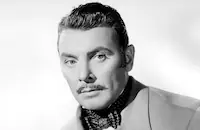
George Brent

Ruby Keeler

Guy Kibbee

Una Merkel

Ginger Rogers

Ned Sparks

Dick Powell

Allen Jenkins

Edward J. Nugent

Robert Mcwade
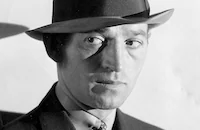
George E. Stone
Clarence Nordstrom

Henry B. Walthall
Al Dubin

Harry Warren

Toby Wing
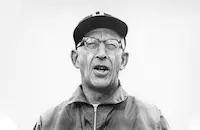
Charles Lane

Dave O'brien
Rolfe Sedan

Jack La Rue
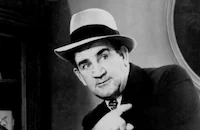
Tom Kennedy
Harry Akst

Louise Beavers
Crew
George Baxter
Busby Berkeley
Cheney Brothers
Al Dubin
S. Charles Einfeld
Leo F. Forbstein
Gordon Hollingshead
Rian James
Michael Joyce
Nathan Levinson
Buddy Longworth
Speed Mitchell
Harold Noyes
Jack Okey
Orry-kelly
Sol Polito
James Seymour
Dolph Thomas
Harry Warren
Charles Scott Welbourne
George Whittemore
Darryl Zanuck

Photo Collections
Videos
Movie Clip





Trailer
Hosted Intro
Film Details
Technical Specs

Award Nominations
Best Picture
Best Sound
Best Sound Editing
Articles
42nd Street
Berkeley, who also designed many of the sets used in his numbers, brought a scale to the movie musical that was truly gargantuan, involving hundreds of dancers moving in unison with all manner of props through fantastic environments. In one number for 42nd Street he created three enormous cylindrical turntables, each higher than the next, that spun in opposite directions as an army of chorus girls tapped on the discs.
42nd Street, which follows a Broadway musical from casting call to opening night, became a landmark film that turned the tide for the movie musical. At the time, the genre had slipped in popularity due to overexposure after numerous attempts to duplicate the success of MGM's Oscar-winning The Broadway Melody (1929). But 42nd Street, which won an Oscar nomination as Best Picture, helped Warner Bros. emerge as a major force in film production and established Berkeley as the "mad genius" of musical production numbers. "A lot of people used to believe I was crazy," Berkeley would later admit. "But I can truthfully say one thing: I gave 'em a show!"
Keeler (then Mrs. Al Jolson and making her film debut) plays Peggy, the starry-eyed chorus girl who replaces leading lady Bebe Daniels in the Broadway musical Pretty Lady. The show's director, Warner Baxter, famously tells her that "You're going out there a youngster, but you've got to come back a star!" In another star-making turn, Dick Powell is Peggy's leading man - a role he would fill for Keeler in several other musicals. 42nd Street was also an important movie in the career of the young Ginger Rogers, who plays a chorus girl named "Anytime Annie," of whom it was said, "She only said 'No' once, and that was when she didn't hear the question."
Producer: Darryl F. Zanuck, Hal B. Wallis (associate, uncredited)
Director: Lloyd Bacon
Screenplay: Rian James, James Seymour, Whitney Bolton (uncredited), from novel by Bradford Ropes
Cinematography: Sol Polito
Original Music: Harry Warren
Art Direction: Jack Okey
Editing: Thomas Pratt, Frank Ware
Costume Design: Orry-Kelly
Principal Cast: Warner Baxter (Julian Marsh), Bebe Daniels (Dorothy Brock), George Brent (Pat Denning), Ruby Keeler (Peggy Sawyer), Guy Kibbee (Abner Dillon), Una Merkel (Lorraine Fleming), Ginger Rogers (Ann Lowell), Ned Sparks (Thomas Barry), Dick Powell (Billy Lawler).
BW-90m. Closed captioning.
by Roger Fristoe

42nd Street
42nd Street - Broadway Revival
Shirley Jones and Patrick Cassidy have previously appeared together on stage - in The Sound of Music for the St. Louis MUNY in 1977. Jones played Maria to Cassidy's Rolf (with Sarah Jessica Parker playing Brigitta).
SHIRLEY JONES (Dorothy Brock), star of screen, stage and television, returns to Broadway for the first time in nearly 40 years when she appeared with her husband Jack Cassidy in Maggie Flynn in 1968. She made her Broadway debut in 1953 in South Pacifi. Shirley Jones won the Academy Award® in 1960 for Best Supporting Actress for her role opposite Burt Lancaster in Elmer Gantry. Other memorable films include Oklahoma! and Carousel with Gordon MacRae, The Music Man with Robert Preston, April Love with Pat Boone, The Courtship of Eddie's Father opposite Glenn Ford and Ron Howard, among others. Some of her many TV appearances include: The Partridge Family, The Big Show and most recently, The Drew Carey Show, Sabrina, the Teenage Witch, and That 70's Show.
PATRICK CASSIDY (Julian Marsh) most recently appeared on Broadway in Aida (as well as the national tour for which he won the 2002 National Broadway Theatre Award for Best Actor in a Touring Musical), Annie Get Your Gun opposite Cheryl Ladd, The Pirates of Penzance and Leader of the Pack. He originated the role of the Balladeer in Stephen Sondheim's Assassins at Playwrights Horizons and appeared in Lady in the Dark at City Center's Encores!. He starred in the TV miniseries Dress Grey (Emmy nomination) and was a series regular on NBC's Bay City Blues, and the WB's Smallville.
Based on the classic 1933 movie musical of the same name, 42ND STREET tells the story of a starry-eyed young actress named Peggy Sawyer who has come to audition for the new Julian Marsh-directed musical that is about to open on Broadway. Peggy soon catches the eye of the famous director, and when the chorus turns up one girl short, Peggy gets her big break. But Peggy can't seem to stay in the good graces of the show's aging leading lady, Dorothy Brock, and on opening night, Peggy accidentally trips Ms. Brock, who falls and breaks her ankle. The furious director fires Peggy on the spot. Discouraged and ready to give up all her dreams of becoming a star, Peggy packs her bags and heads for the train station, but fate has other plans for Peggy Sawyer who may turn out to be a star yet!
A Broadway Legend, 42ND STREET defined musical comedy, with its star-is-born story, spectacular design, score of hit standards and remarkable tap dancing ensemble. The original Broadway production of 42ND STREET won the 1981 Tony Award for Best Musical, ran for more than 8 years (August 25, 1980 - January 8, 1989), and remains one of the ten-longest running shows in Broadway history.
42nd Street - Broadway Revival
Quotes
It seems that little Loraine's hit the bottle again.- Jerry
Yah, the peroxide bottle.- Andy Lee
Little Lorraine's been hittin' the bottle again.- Jerry
Yeah, the peroxide bottle.- Mac Elroy
You remember Anne Lowell?- Loraine
Not Anytime Annie!? Say, who could forget 'er? She only said "No" once, and THEN she didn't hear the question!- Andy Lee
Now go out there and be so swell - that you'll make me hate you!- Dorothy Brock
. . . Your future's in it, my future and everything all of us have is staked on you! Alright, now I'm through; but you go out and you keep your feet on the ground, and your head on those shoulders of yours, and go out and, Sawyer - you're going out a youngster, but you've GOT to come back a star!- Julian Marsh
Now go out there and be so swell that I'll hate you.- Dorothy Brock
Sawyer, you listen to me, and you listen hard. Two hundred people, two hundred jobs, two hundred thousand dollars, five weeks of grind and blood and sweat depend upon you. It's the lives of all these people who've worked with you. You've got to go on, and you've got to give and give and give. They've got to like you. Got to. Do you understand? You can't fall down. You can't because your future's in it, my future and everything all of us have is staked on you. All right, now I'm through, but you keep your feet on the ground and your head on those shoulders of yours and go out, and Sawyer, you're going out a youngster but you've got to come back a star!- Julian Marsh
Trivia
Henry B. Walthall originally had a large role including a key scene in which he died on stage during rehearsals. Almost all of his scenes ended up on the cutting room floor.
The following cast was considered: - Warren William or Richard Barthelmess instead of Warner Baxter - Kay Francis or Ruth Chatterton instead of Bebe Daniels - Loretta Young instead of Ruby Keeler - Joan Blondell instead of Ginger Rogers - Glenda Farrel instead of Una Merkel - Frank McHugh instead of George E. Stone
Ginger Rogers took the role of Anytime Annie at the urging of director Mervyn LeRoy, whom she was dating at the time.
In one of the opening scenes, Bebe Daniels is reading the premiere issue of The New Yorker magazine, with its trademark top-hatted Manhattanite on the cover.
Notes
The film introduced Ruby Keeler and was the first Warner Bros. film for Busby Berkeley and songwriters Harry Warren and Al Dubin. Mervyn LeRoy was originally scheduled to direct, but due to illness was replaced by Lloyd Bacon. According to AMPAS clipping files, as a publicity stunt, a train called the "42nd Street Special," traveled from Hollywood to New York City, arriving the day the film opened in New York. Celebrities including Tom Mix and his horse and chorus girls from the film were on the train.
The film had a shooting schedule of 28 days and was made for a total cost of $340,000. The popular musical, which was one of the top money making films of the year, won Academy Award nominations for Best Picture and Best Sound Recording and also appeared as number two on the Film Daily Ten Best. In 1980, a theatrical adaptation of the screenplay with additional songs, produced by David Merrick and choregraphed by Gower Champion, was a Broadway hit. According to modern sources, Whitney Bolton wrote the first treatment and worked with James Seymour on several drafts before he was replaced by Rian James.

Miscellaneous Notes
Released in United States 1933
Released in United States 1996
Released in United States 2012
Broadcast in USA over TBS (colorized version) December 10, 1986.
Selected in 1998 for inclusion in the Library of Congress' National Film Registry.
Released in United States 1933
Released in United States 1996 (Shown in Los Angeles (Laemmle's Monica 4-Plex) as part of program "Turner's Tuners: Great Musicals From the Turner Library" October 12 - December 29, 1996.)
Released in United States 2012 (Guest Artistic Director - Bernardo Bertolucci)


